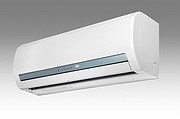Hearth and home
COLUMBIA BASIN — Winter is here and there are several things residents can do to lower their heating bill and keep themselves and their homes safe, all while staying toasty warm in the cold weather.
“If (residents) have a central system, mini splits, or even those things on the wall, they get lint and everything in (the filter) so you want to check those,” said Ramon Garcia Jr., service technician for Home Electrical Services in Moses Lake.
Garcia said one of the most important things that residents can do is to check the filter on their heating system. He said residents should check it every month if possible for dirt and dust buildup regardless of how long the filter is expected to last.
“In springtime, they're discing and that dirt flies all over – we still get ash from St.Helens, it shows up in your filter,” Garcia said.
Garcia noted that the location of heaters and coils in homes can vary, knowing the layout of the home can help to determine what else may affect the filter. He said in a lot of manufactured homes, the furnace will be put next to the washer and dryer, making lint something to watch out for. Landscaping elements such as cottonwood trees can also clog filters; the fluff they shed will also find its way into heating and cooling systems.
“So basically you want to keep everything clean,” he said. “But the bottom line is your filters – you take care of that, you don’t need anything. Yeah, (systems are) going to break here and there but like for us, it's easy to fix something that's broken. What’s hard is the intermittent things because you have to stay there to wait it out.”
The best time to check to make sure heating systems are working properly, Garcia said, is in September to October before they are really needed and have time to be scheduled to be diagnosed and fixed.
Garcia said a few things to do before having a technician come out include checking the batteries on your thermostat, checking the fuse of the system and checking the breaker box for any tripped breakers.
According to the website ready.gov, residents can prepare their homes to keep out the cold with insulation, caulking and weather stripping.
Garcia said that another place to lower costs and reduce wear and tear on the heating system is at the thermostat. He said setting your thermostat lower and to kick on within a couple of degrees of the set temperature, rather than just one degree of it, will save money.
“The initial start (of the system kicking on) is where all the electricity is used and after that it balances out and runs where it’s supposed to,” said Garcia.
He also said that for every degree higher a thermostat is set from the average 60-70 degrees, it costs the resident about $50-60. He said it is because the system has a bigger temperature gap from the outside temperature to the set temperature the system has to work toward.
Safety is another important aspect of keeping a home warm in the winter. Keeping filters clear of debris will not only lower heating costs but also prevent the chances of it catching fire. The Federal Emergency Management Agency website says never to use a charcoal grill, stove or oven to heat a home, and to keep heaters at least three feet away from other items to keep them from catching fire and prevent carbon monoxide poisoning.
Residents can receive assistance with heating costs, weatherization or energy-related home repairs, through the Low Income Home Energy Assistance Program. For more information visit www.benefits.gov/benefit/623.
Rebecca Pettingill may be reached at rpettingill@columbiabasinherald.com.







